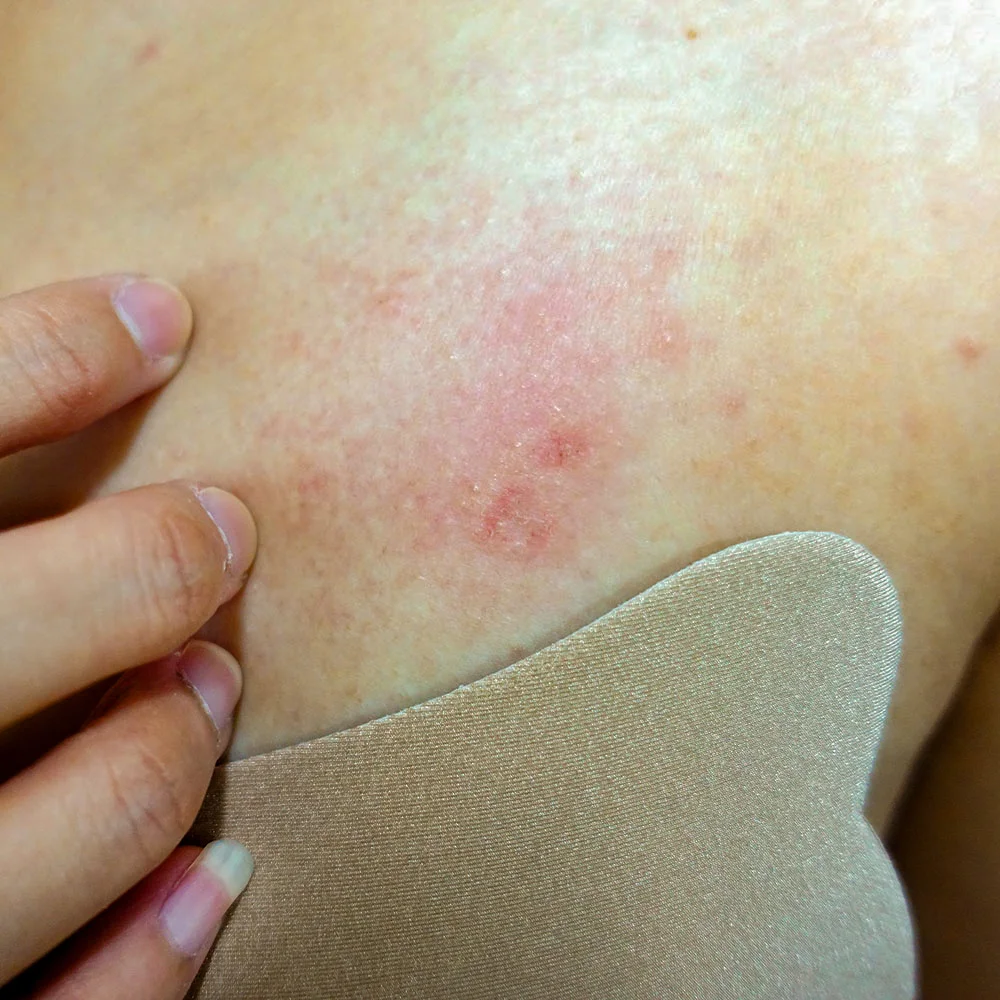Low testosterone in women: symptoms and treatment options

Reviewed by Chimene Richa, MD,
Written by Health Guide Team
last updated: Nov 22, 2022
4 min read
Here's what we'll cover
Contrary to popular belief, all people (read: not just men) need testosterone to function properly. In biological women, healthy testosterone levels support bone density, muscle mass, libido, energy, and more. When testosterone levels are low, biological women may experience unwanted symptoms like low sex drive and vaginal dryness. Continue reading to learn more about symptoms and treatment options for low testosterone in women.
What is testosterone?
Testosterone is more than just the primary “male” sex hormone (androgen). While men have approximately 20–25 times higher testosterone levels than women, women need testosterone as well (Fabbri, 2016).
Women produce testosterone in ovarian cells called theca cells. They also produce testosterone in the adrenal glands, small specialized glands that sit on top of your kidneys. Adipose tissue, or body fat, is another source of testosterone. However, most of the testosterone women produce is converted to estradiol (which becomes estrogen), the primary “female” sex hormone (Udoff, 2020).
Most testosterone in women is attached to sex hormone-binding globulin (SHBG), which means there’s less free (unattached) testosterone flowing throughout the body than in men. Total testosterone is the total concentration of both protein-bound and free testosterone.
What does testosterone do for women?
Testosterone supports a number of bodily systems, but balance is key—low or high testosterone in women can lead to unwanted symptoms. Women require a healthy level of testosterone for the following functions (Tyagi, 2017):
Like men, androgen levels in women decline with age, although levels generally stabilize in menopause. Medical conditions that affect the ovaries or adrenal glands may also lead to low testosterone levels in women (Udoff, 2020).
Symptoms of low testosterone in women
An imbalance of testosterone can have a negative impact on health and sexual function. Symptoms of low testosterone in women may include (Udoff, 2020):
Decreased sex drive
Decreased satisfaction with sex
Vaginal dryness
Weaker bones and bone density loss (osteoporosis)
However, the relationship between low testosterone in women and these symptoms is unclear. In 2014, the Endocrine Society Task Force studied the levels of testosterone in women with these symptoms and did not find a correlation between particular testosterone levels and the presence of symptoms. So, while women need testosterone, the precise link between low testosterone levels and these symptoms has not been proven, especially in otherwise healthy women (Wierman, 2014).
What causes low testosterone in women?
Several conditions can lead to low testosterone levels in women, including (Udoff, 2020):
Aging: Testosterone levels decline naturally with age until menopause. In menopausal women, the ovaries continue to produce testosterone but not estrogen.
Bilateral oophorectomy (surgical removal of both ovaries): Since the ovaries still produce testosterone even after menopause, women who have had this surgery have even lower testosterone levels than postmenopausal women.
Primary adrenal insufficiency: If your adrenal glands are not working correctly, you may not produce enough testosterone.
Pituitary gland dysfunction: In the normal testosterone production cycle, the pituitary gland (a gland at the base of your brain) releases a hormone called luteinizing hormone (LH), which tells your ovaries to produce testosterone. If your pituitary gland is not functioning normally, your ovaries may not get the signal to produce testosterone.
Anorexia nervosa: Anorexia nervosa is a condition where self-starvation leads to severe undernutrition. People with anorexia have very little body fat, a significant source of testosterone in women. This condition also affects the pituitary's ability to produce LH normally, resulting in low testosterone levels (Misra, 2016).
Oral contraceptive pills (OCPs): OCPs, usually containing estrogen and progesterone, stop the ovaries from producing as much testosterone as usual. They also decrease free testosterone levels by increasing sex hormone-binding globulin (SHBG) levels. When the testosterone is bound to SHBG, it is not available for the body to use.
Glucocorticoid steroid medications: Glucocorticoid steroids lower testosterone levels by suppressing adrenal gland function.
Human immunodeficiency virus (HIV): Women with HIV may have low levels of testosterone.
Treatment for low testosterone in women
Unfortunately, scientists still do not fully understand how low testosterone levels affect women or the best approach to treat low testosterone in women.
The current recommendations are not to treat low testosterone levels in women with testosterone replacement therapy (TRT) because there isn’t enough evidence to show that TRT improves symptoms. In other words, women should not take testosterone or DHEA supplements to treat low testosterone levels because we don't really know what levels of androgens are needed for healthy functioning in women (Wierman, 2014).
The exception is postmenopausal women with hypoactive sexual desire disorder (HSDD) (Wierman, 2014). HSDD is a sexual dysfunction that affects 10% of adult women. It causes women to experience a lack of motivation to participate in sex due to a decreased sexual desire or inability to maintain interest throughout the sexual activity (Goldstein, 2017).
Short-term therapy with testosterone has improved HSDD symptoms in some postmenopausal women. Interestingly, testosterone levels on blood tests after hormone replacement therapy didn't seem to align with an improvement in symptoms. Testosterone replacement is not recommended for premenopausal women with HSDD (Wierman, 2014). But even for postmenopausal women, TRT for women is not approved by the FDA.
Risks of treating low testosterone in women
Currently, research on the safety of TRT for women is limited. Women may experience side effects from testosterone replacement therapy, including hair loss, acne, excess facial hair, and a deepening of the voice.
Research on the relationship between androgen therapy and breast cancer development has had varying results, especially in postmenopausal women. Scientists are still uncertain how TRT affects women's risk of cardiovascular disease (Udoff, 2020).
Testosterone therapy is not FDA-approved for use in women. Women should avoid using testosterone formulations that are made for men to treat their symptoms, especially without seeking medical advice. If you and your healthcare provider decide on TRT to treat low testosterone, your testosterone levels will be checked routinely, and you should watch out for signs of high testosterone (acne, hair growth, etc.) (Faubion, 2015).
Lifestyle changes that may improve some symptoms of low testosterone in women include:
Healthy diet
Sufficient calcium intake (for healthy bones)
Sex therapy to help sexual functioning
Hormonal balance is crucial for everyone’s health and wellness. If you suspect your testosterone levels are too high or low, you may experience side effects. Visit a healthcare provider to test your testosterone levels and come up with a treatment plan (if necessary) that’s right for you.
DISCLAIMER
If you have any medical questions or concerns, please talk to your healthcare provider. The articles on Health Guide are underpinned by peer-reviewed research and information drawn from medical societies and governmental agencies. However, they are not a substitute for professional medical advice, diagnosis, or treatment.
Fabbri, E., An, Y., Gonzalez-Freire, M., Zoli, M., et al. (2016). Bioavailable testosterone linearly declines over a wide age spectrum in men and women from the Baltimore Longitudinal Study of Aging. The Journals Of Gerontology Series A: Biological Sciences and Medical Sciences, 71 (9), 1202-1209. doi:10.1093/gerona/glw021. Retrieved from https://pubmed.ncbi.nlm.nih.gov/26921861/
Faubion, S. S. & Rullo, J. E. (2015). Sexual dysfunction in women: a practical approach. American Family Physician , 92 (4), 281-288. Retrieved from https://www.aafp.org/afp/2015/0815/p281.html
Goldstein, I., Kim, N. N., Clayton, A. H., et al. (2017). Hypoactive sexual desire disorder: International Society for the Study of Women's Sexual Health (ISSWSH) expert consensus panel review. Mayo Clinic Proceedings , 92 (1), 114–128. doi:10.1016/j.mayocp.2016.09.018 https://pubmed.ncbi.nlm.nih.gov/27916394/
Misra, M. & Klibanski, A. (2016). Anorexia nervosa and its associated endocrinopathy in young people. Hormone Research in Paediatrics, 85 (3), 147–157. doi:10.1159/000443735. Retrieved from https://pubmed.ncbi.nlm.nih.gov/26863308/
Tyagi, V., Scordo, M., Yoon, R. S., et al. (2017). Revisiting the role of testosterone: Are we missing something?. Reviews in Urology , 19 (1), 16–24. doi:10.3909/riu0716. Retrieved from https://www.ncbi.nlm.nih.gov/pmc/articles/PMC5434832/
Udoff, L. C. (2020). Overview of androgen deficiency and therapy in women. UpToDate. Crowley, W.F., Barbieri, R.L, Martin, K.A. (Eds.). Retrieved on Mar. 4, 2021 from https://www.uptodate.com/contents/overview-of-androgen-deficiency-and-therapy-in-women
Wierman, M. E., Arlt, W., Basson, R., et al. (2014). Androgen therapy in women: a reappraisal: an Endocrine Society clinical practice guideline. The Journal of Clinical Endocrinology and Metabolism, 99 (10), 3489–3510. doi:10.1210/jc.2014-2260. Retrieved from https://academic.oup.com/jcem/article/99/10/3489/2836272










